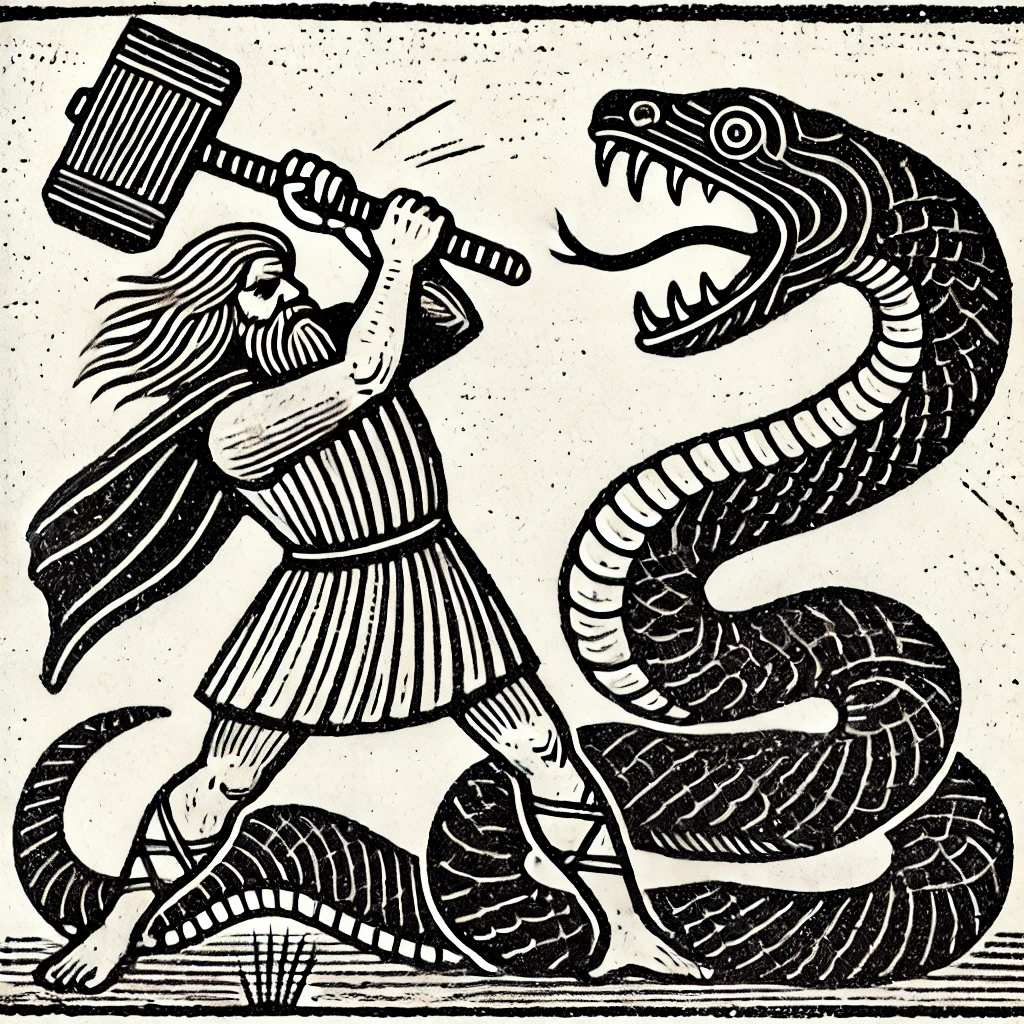Once upon a time, the god of thunder, Thunor, walked among living men in the Low Countries, in an area now called the Veluwe. He was the protector of the simple folk and the enemy of all who wished to do evil. Many a time did Thunor face the winter giants and their monstrous allies, who sought to plunge the world into unending darkness.
One terrible year, as winter drew near, a great darkness descended upon the land, and with it came the winter giants, who sought to envelop the world in eternal frost. These giants, towering and clad in ice, were bent on freezing the world’s warmth and light, ensuring their dominion over all.
Still the mighty Thunder God stood fast against them, and after many angry encounters ended with the Giants of Winter in retreat, Spring seemed to about to arrive at last. Seeing their power waning, the giants allied with the Great Wyrm, a monstrous, many-coiled creature that embodied chaos, who dwelt beneath the Earth Sea in the darkest depths.
The giants hurled hailstones from the heavens, while the serpent coiled around the highest oak, spewing venom into the sky. Thunor, undeterred, rode his chariot through the air, the thunder of his hammer shaking the earth. He came to grips with the Great Wyrm, and they fought, the coils of the immense monster seeking to encircle and crush the Thunderer, its fanged maw slavering. With a mighty blow, he struck the serpent’s head, driving his hammer deep into the earth, seven miles below.
Though the serpent was vanquished, it made one last attack, spraying its foul venom in the Thunder God’s face. its venom began to scorch Thunor’s veins, weakening him. With a resounding bang, the great god fell from the sky. His chariot, pulled by his faithful goats, crashed onto the Donderberg (“Thunderhill”), The impact was so tremendous that the ground gave way, and waters from the Earth Sea surged upwards, flooding the land and covering the battle’s aftermath. It was then that the sea god Fosite, hearing Thunor’s fall, blew his horn, summoning a great dark ship to carry the unmoving form of the Thunder God away to the hidden realm of the gods, and away from the sight of men.
When the waters receded, two deep lakes remained: the Uddelermeer and the Bleekemeer, as deep as the world itself. The people of the Veluwe, witnessing the stillness of the lakes, marveled. Yet they wondered, who now would protect them from the natural forces that had so recently grown wild and unpredictable? suddenly, one of the lakes began to boil and seethe, and they saw Thunor’s hammer rise from the depths on its own, moving without any hand upon it as it always did when its master called it. It rose into the morning sky, and then, lo! With a crack of thunder and a flash of lightning it was gone. This miraculous event was a sign that Thunor’s spirit still watched over them.
Moved by this miracle, the people began to worship Thunor at the lakes, building altars by the Uddelermeer and Bleekemeer, in honor of their protector.
Sources:
Van De Wall Perné, Gustaaf Frederik. Veluwsche Sagen: Eerste Bundel. Scheltens & Giltay, 1932. Digitale Bibliotheek Voor De Nederlandse Letteren, 9 Aug. 2016.

